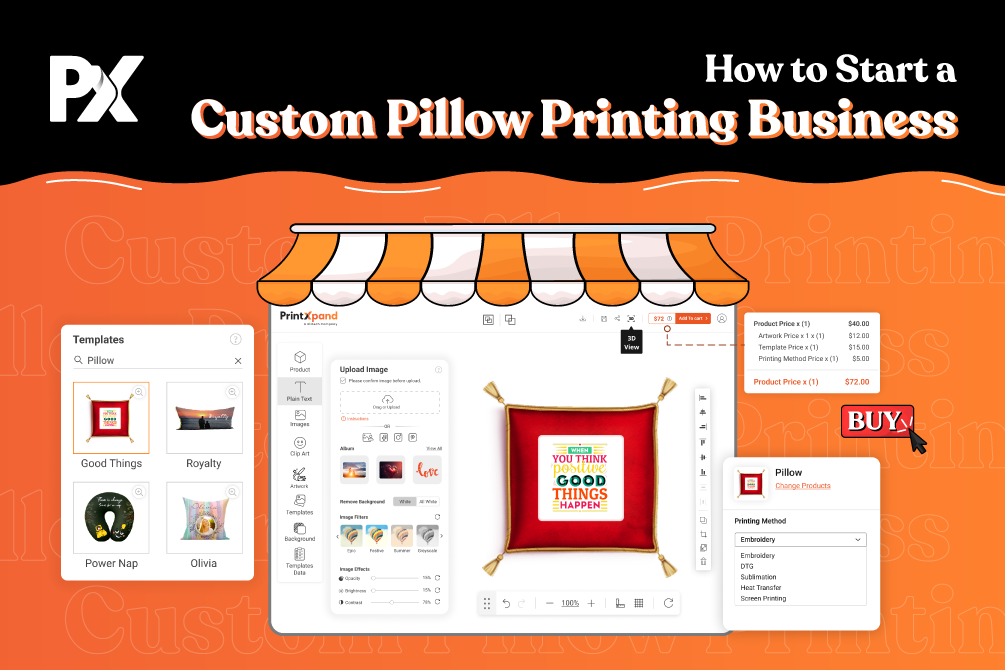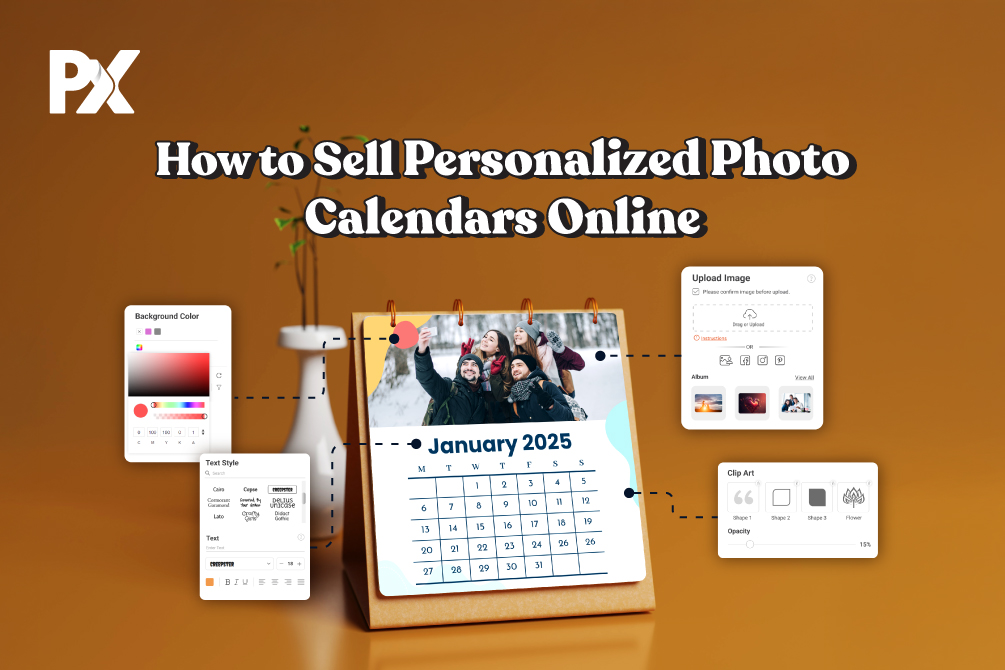- Summary
- C2C Marketplace at a Glance
- Step 1: Choose a Marketplace Category [Narrow Focus to Compete Online Giants]
- List of niches where C2C marketplaces are thriving:
- Step 2: Build a Platform that Establishes Trust and Customer Loyalty
- Step 3: Features That Are a Win-win For All Stakeholders
- Step 4: Get Your Shipping Strategy in Place
- Step 5: Choose a Monetization Model
- Step 6: Find the Best Promotional Strategies
- Build a C2C Marketplace Platform with Us
Summary
89.9 million active buyers. 4.3 billion active sellers. $13.3 billion in gross merchandise sales – these are Etsy’s current user count and facts.
The company’s growth has been staggering.
In 2005, when Etsy was launched, its first sale was worth $8. By 2023, it had grown to $17.94 billion.
Etsy’s success has inspired hundreds of entrepreneurs who want to start a C2C marketplace model.
However, when building a C2C marketplace platform, businesses face a few challenges because they lack understanding of the market, users, etc.
To help you successfully launch a C2C marketplace platform, we have prepared a complete guide covering everything from understanding the business model to end-to-end C2C marketplace development.
C2C Marketplace at a Glance
Consumer-to-consumer eCommerce is an online version of flea markets and artisan markets. A C2C marketplace holds thousands of users, both sellers and buyers, and facilitates transactions between them.
It is also known as an artist or designer marketplace where one stakeholder offers their services (like designs or artwork), and the other buys products at a competitive price.
The only difference between the consumer-to-consumer marketplace model and B2B/B2C is that the seller is not necessarily a business entity. They are simultaneously both sellers – providing their services to shoppers and consumers – using the services of a third-party platform.
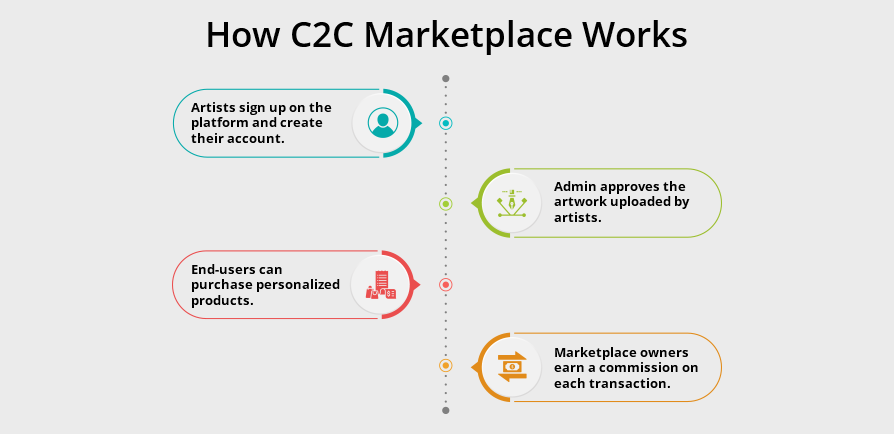
A consumer to consumer marketplace includes three stakeholders:
- Marketplace Owner – Marketplace owners can make more profits by offering a centralized platform to design or art providers with complete logistics and printing capabilities.
- Designers – Designers/artists can leverage the platform to enable end-users to use their designs for their products. All they have to do is register themselves on the marketplace, create their customized storefronts, and sell their designs after admin approval.
- End-customers – Shoppers get a platform to buy personalized products with unique designs.
Start with C2C marketplace development with PrintXpand. With hands-on technical and industrial expertise, we can help you build a platform that fits your requirements.
Step 1: Choose a Marketplace Category [Narrow Focus to Compete Online Giants]
You have two options: be a specialist or offer everything to everyone.
The process of building a C2C marketplace platform begins with deciding the type of marketplace you want to create. There are two types of marketplaces: horizontal and vertical.
Horizontal businesses are a one-stop shop that sells products from a large number of categories. One standard example is Amazon. Since the horizontal marketplace includes different market segments, you can achieve greater coverage. However, you fail to dominate a specific market.
On the other hand, a vertical marketplace aims to serve a specific category to a targeted audience. By doing so, you can showcase products in the best possible way and ultimately dominate that market.
It also solves one of the biggest challenges of starting a marketplace – competing with online giants. With leaders like Etsy, Amazon, etc., ranking high in a competitive niche becomes difficult.
How Amazon Handmade Challenged Etsy
There’s a good lesson to learn from Amazon Handmade. Amazon challenged Etsy by launching Handmade by Amazon in early 2015. The microsite allows artisans to sell handmade products.
The company was smart in choosing only 14 narrowly defined categories like jewelry, pet supplies, toys, etc., as compared to Etsy’s 160 defined product categories.

(Amazon Handmade’s narrowly defined categories)
In the same way, when starting a C2C marketplace, instead of focusing on a wider audience and broader product categories, a good idea is to have a narrow focus.
List of niches where C2C marketplaces are thriving:
- Freelance Services: Online platforms like Upwork and Fiverr have created C2C marketplaces for individuals to offer their professional services directly to clients. This includes a wide range of skills such as graphic design, writing, programming, and marketing.
- Secondhand Products: C2C marketplaces for secondhand goods, such as eBay, Facebook Marketplace, and Craigslist, have gained significant traction. These platforms enable individuals to buy and sell used items directly to other consumers, covering various categories like fashion, electronics, furniture, and more. They provide a sustainable and cost-effective alternative to traditional retail.
- Craft Supplies: Marketplaces for craft supplies have become popular among DIY enthusiasts and artisans. Platforms like Etsy connect sellers of craft materials and tools with buyers seeking unique supplies for their creative projects. These marketplaces offer a diverse range of items, including fabrics, beads, paints, yarns, and other crafting essentials.
- Grocery: C2C marketplaces for grocery shopping have seen a rise in popularity. Platforms like Instacart and Shipt connect individual shoppers with customers who need groceries delivered to their doorstep. These marketplaces provide a convenient and efficient way for consumers to access a wide variety of food and household products.
Benefits of Niche Marketing
One of the biggest advantages of a niche market is brand loyalty. By engaging with a targeted audience, you can cater to specific needs and thus nurture relationships. It also promotes word of mouth, which in turn will open more growth opportunities.
Ideas in Action
Here are a few examples to inspire you:
Displate sells unique artwork printed on metal sheets. Artists who want to sell their artwork need to make an account and upload their artworks on the site. Once their art sells, they make a 25% commission.
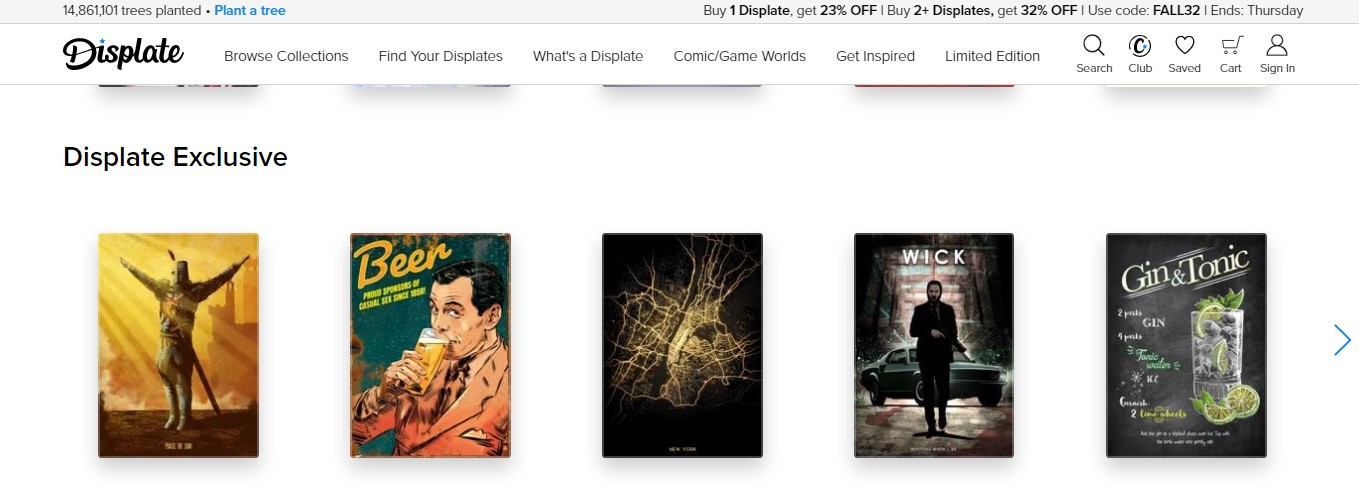
As the name suggests, Artfully Walls sells curated art that you can display as a photo frame on walls. Artists selling their designs here earn a commission on each transaction.
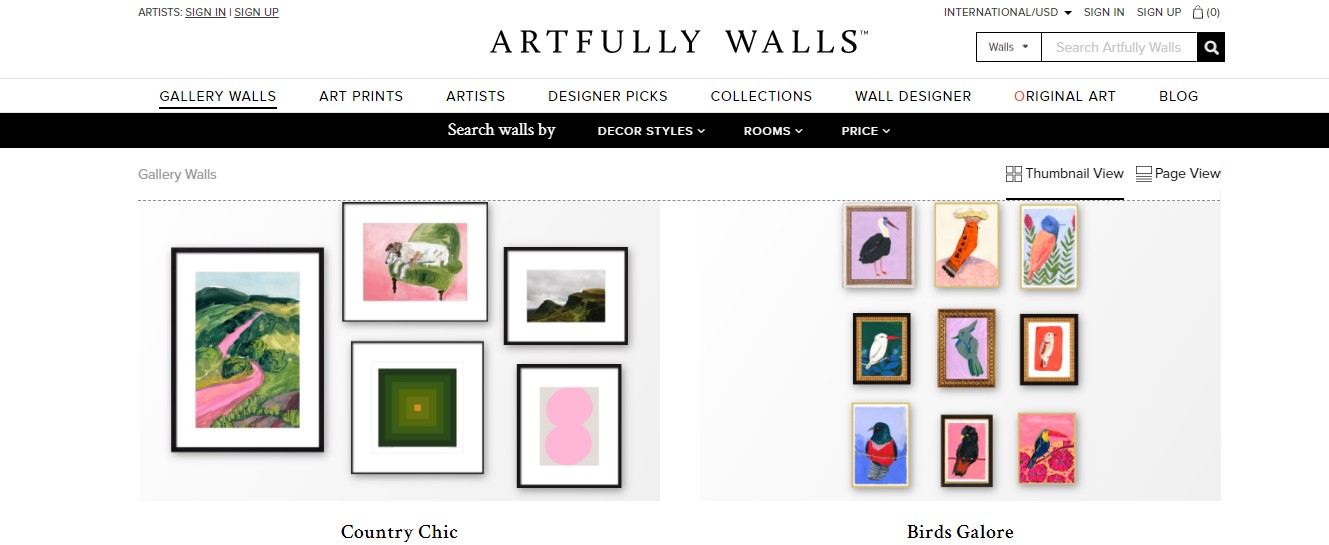
1stDIBS is a B2B marketplace for luxury and vintage furniture, art, and fashion. It connects professionals in the design and collector industries with a curated selection of high-end products sourced globally.
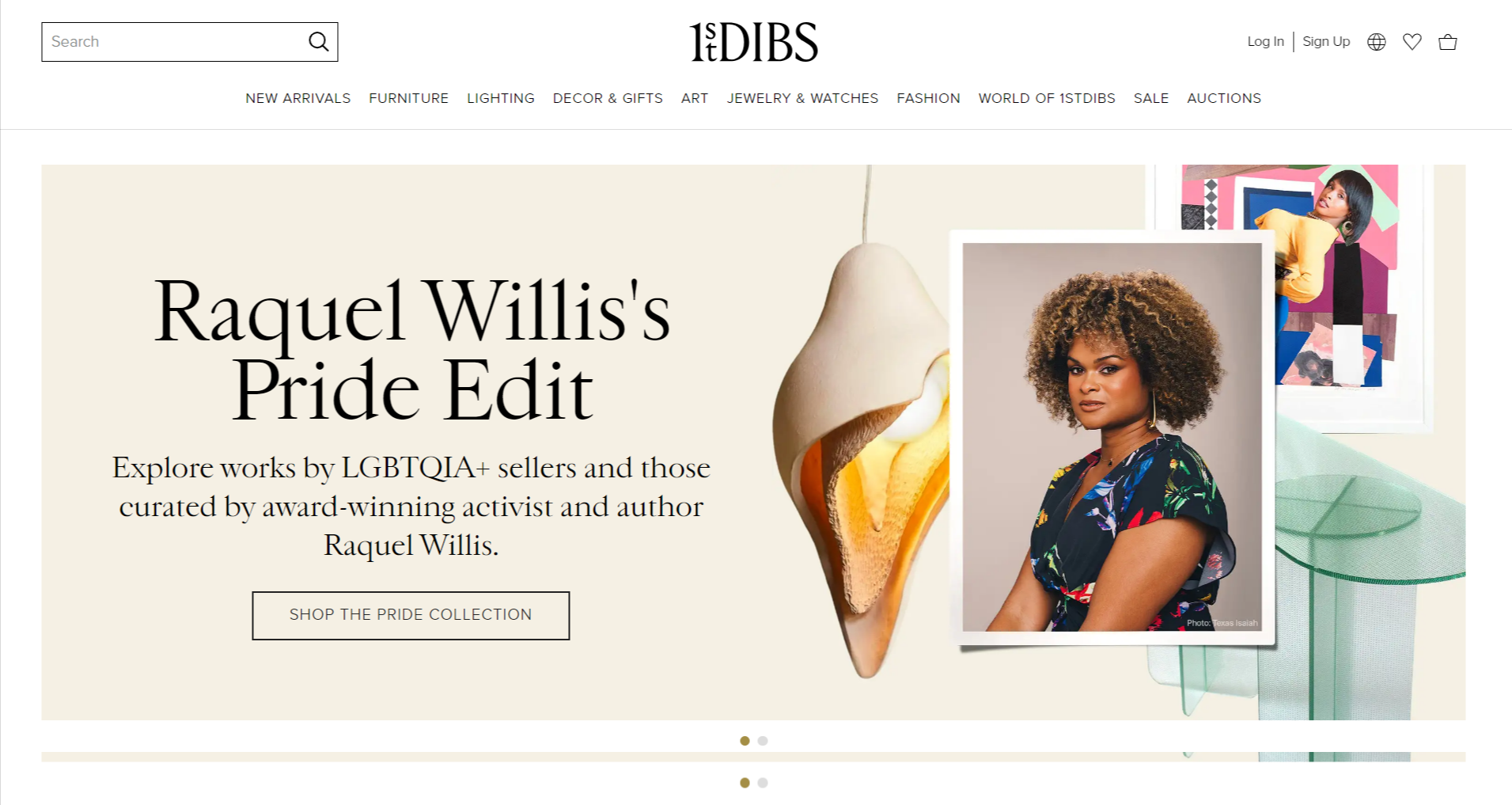
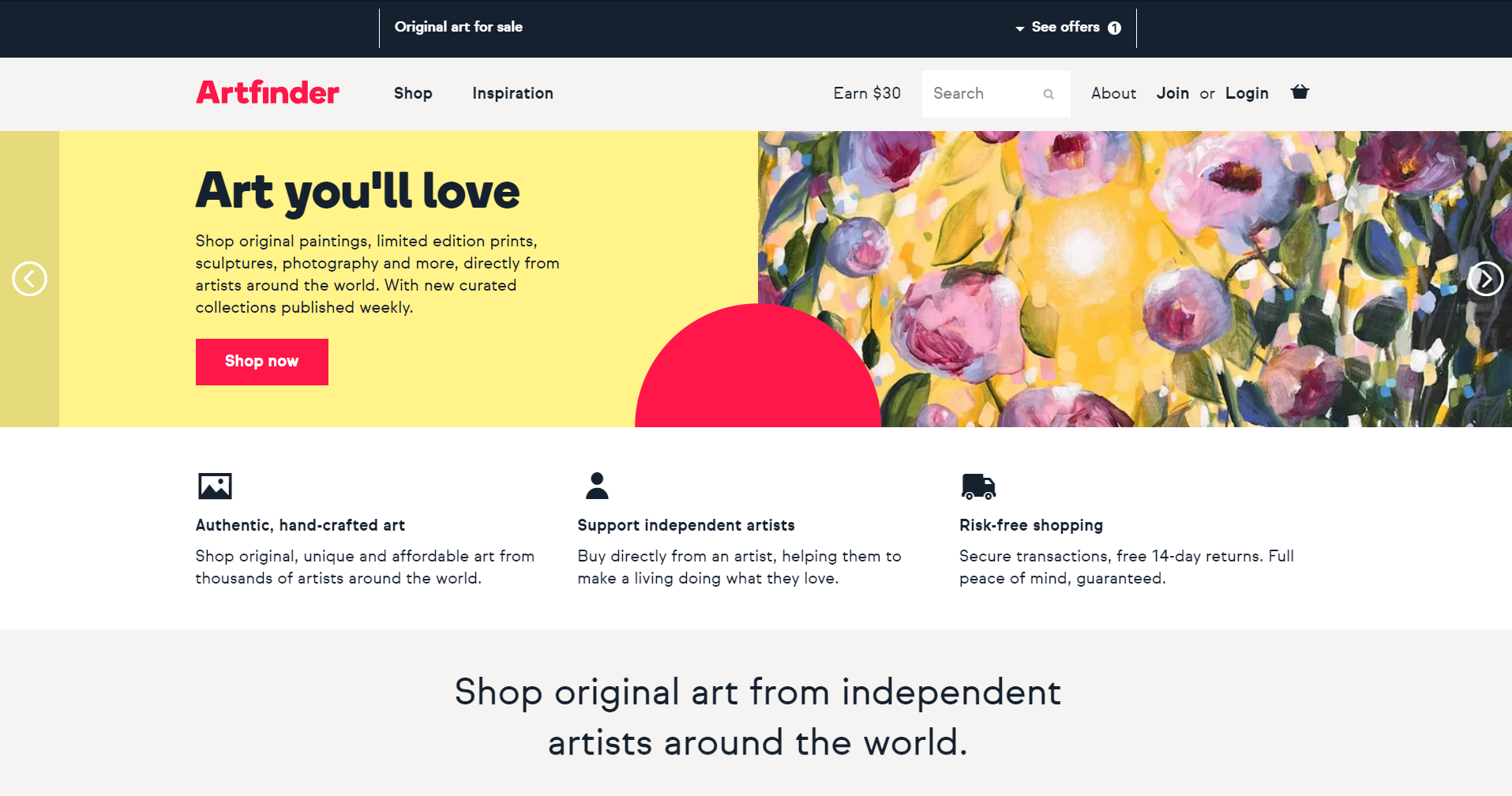
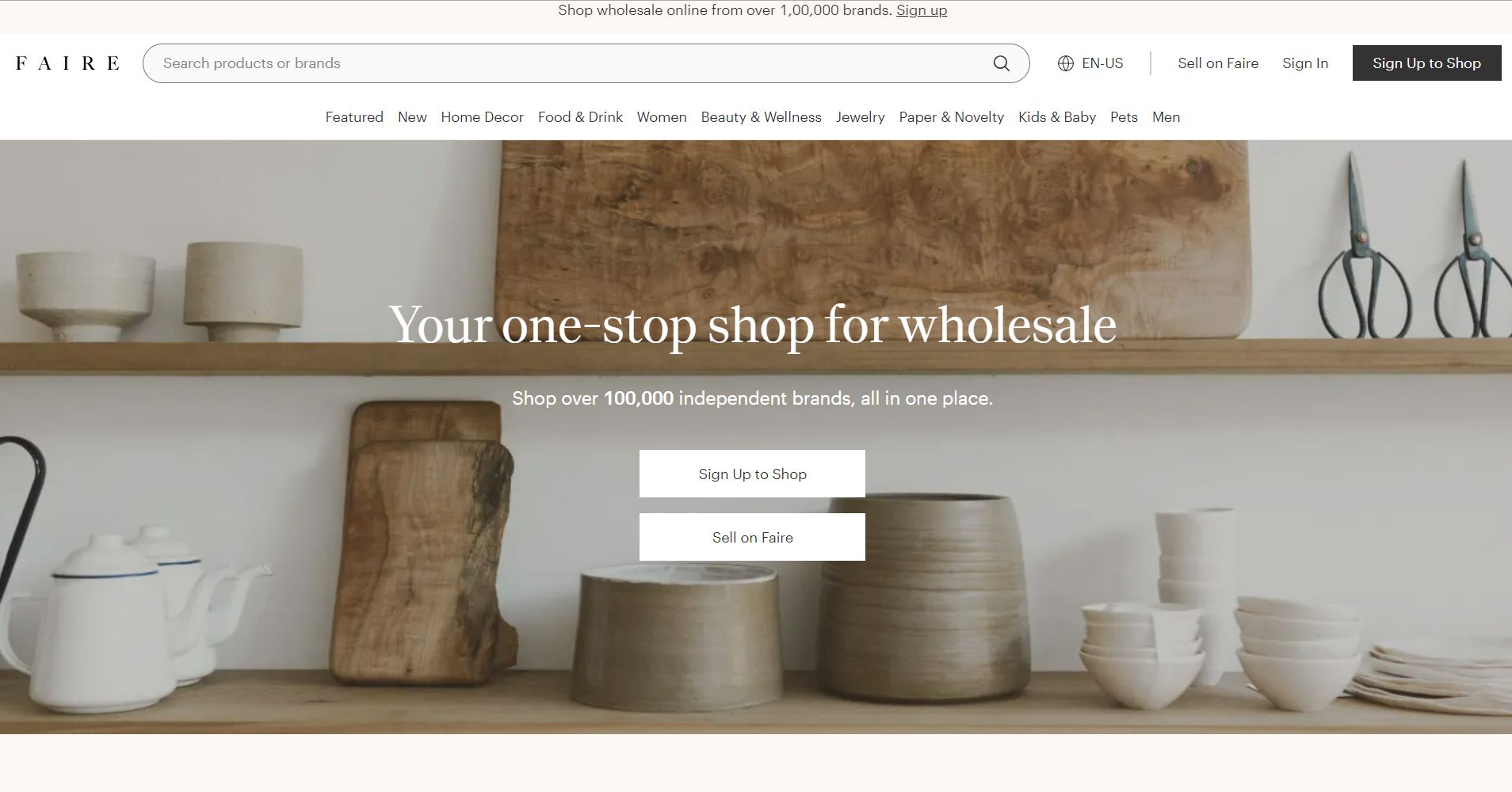
How to Find Your Business’ Ideal Niche
1. Search Trending Products
The most obvious thing to do is to find out what’s trending. Tools like Google Trends will help in tracking the search volume of a specific term over time.
For example, below is a comparison between two search terms – artwork frame and graphic design t-shirts. It shows the interest overtime over the past year in the US. This way, the tool will help you compare products and know what is gaining traction.
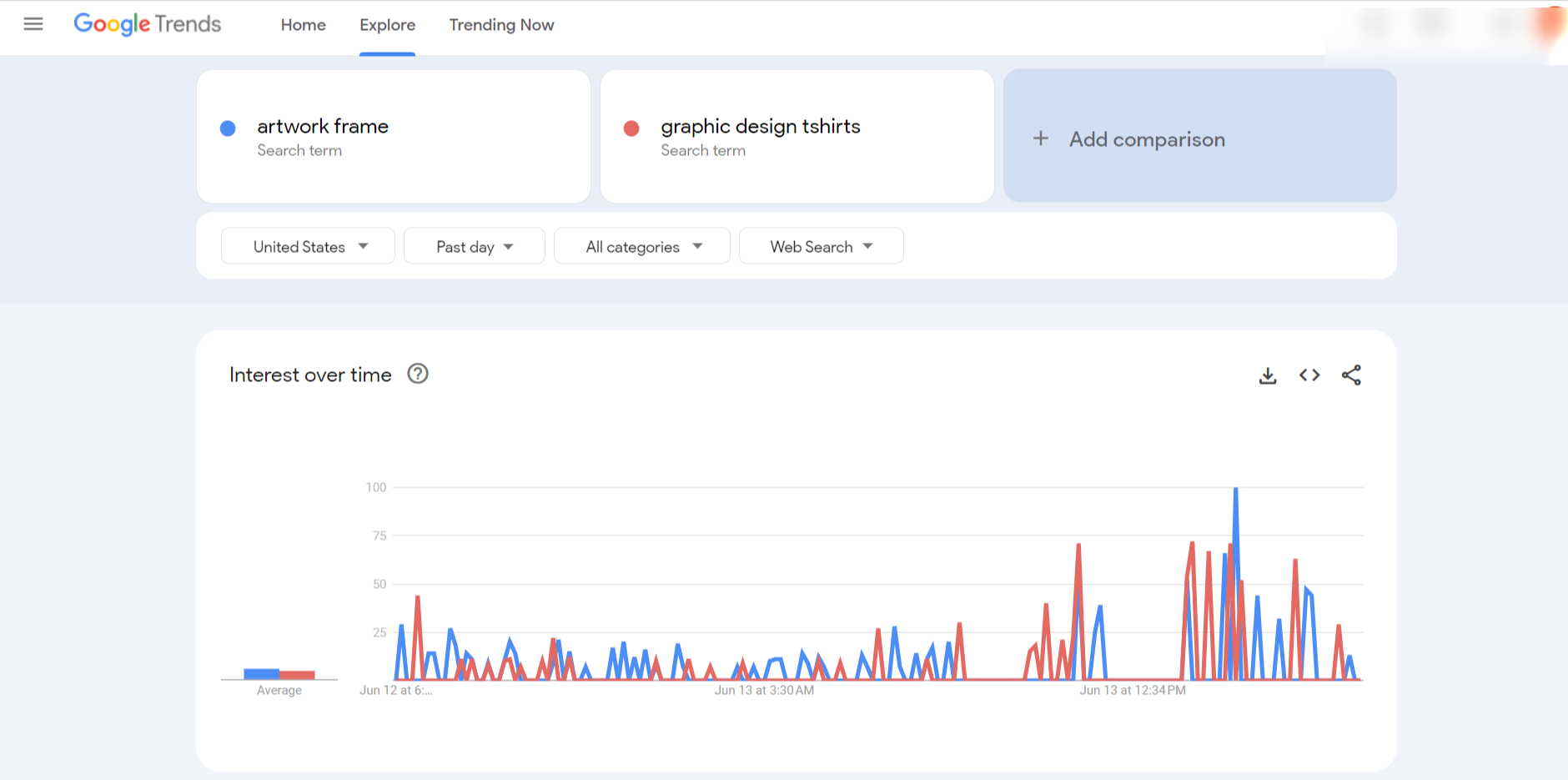
(Compare product ideas with tools like Google Trends)
You can even use tools like Ahrefs, SEMrush, Google Keyword Planner, etc., for evaluating market demand for products. You can see the search volume for each category. Greater the search volume, the higher the demand. And if the search volume is low, it is unlikely to be a profitable niche.
2. Identify an Existing Problem
Just having a list of profitable niches is not enough. You need to dig deeper. Look for three-four customer pain points that your business can help solve. Solving pain points will get people to notice your brand.
Start by analyzing your competitors. Scan through their website, products, pricing, etc., and see if they lack something and how you can serve customers better.
Reviews are an excellent source of knowing potential pain points. You will get a first-hand idea about what customers dislike about a product and what more they expect.
PrintXpand is a one-stop destination that can help you with C2C marketplace development.
Step 2: Build a Platform that Establishes Trust and Customer Loyalty
Even if you have a solid plan, increased competition makes building a lasting relationship with your customers difficult.
Therefore, your business needs to prioritize building trust. By doing so, you enable customers to become the advocates of your business.
This will increase brand visibility, attract more customers, and increase revenue. Here are some points to consider.
Create a Good First Impression with a Beautiful and Functional Design
A study by Stanford University researcher and Ph.D. BJ Fogg found that:
“People quickly evaluate a site by visual design alone. When designing your site, pay attention to layout, typography, images, consistency issues, and more. The visual design should match the site’s purpose.”
So, what makes a design good enough to capture a user’s attention?
Simplicity is at the core of a good design. Along with appearance, what also matters is how easily users are able to find what they are looking for or complete an action.
Amazon is a good example of how an eCommerce website should look. The design is user-friendly, making it easy for customers to find what they are looking for in a sea of millions of products.
In connection with simplicity, the next element is visual hierarchy. It is the process of arranging website elements in a way that visitors naturally gravitate towards the most important elements first.
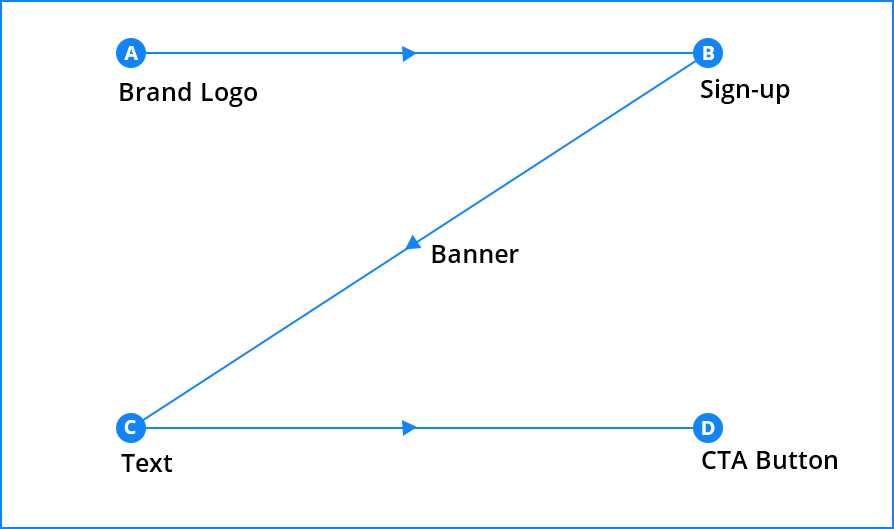
(One way designers grab users’ attention is by using the Z-pattern)
A Z-Pattern design traces a human eye’s route when they read — left to right, top to bottom.
First, you will scan from the top left to the top right corner. Next, your eyes move down to the left side of the page. And lastly, your vision shifts back to the right again.
That way, the pattern includes all four aspects of an effective design – branding, call-to-action, structure, and hierarchy.
How PrintXpand Can Help
Marketplace development requires professionals with technical and industrial expertise. PrintXpand has all the expertise to create a C2C marketplace. Building a C2C marketplace involves both backend configuration for admin as well as artists.
With powerful features, you can ensure that you have everything you need to run your platform smoothly. Our team will also help you integrate a design tool that enables you to sell personalized products. If you want to integrate your store with fulfillment providers like Printful, Printify, etc., we take care of all the technical aspects.
Launch a C2C marketplace with our end-to-end marketplace development services
Step 3: Features That Are a Win-win For All Stakeholders
1. Artist Registration
Easy onboarding for artists or designers is a must-have feature for a C2C marketplace platform. Like any other platform, the starting place for the marketplace is giving users the ability to sign-up. You would want to make the process of registration easy and quick. It is also a common practice to set up multi-factor authentication for security. With simple icons and visuals, you can deliver a seamless experience.
2. Registration Approval
This feature will save you the trouble of dealing with fake or spam users. Using this module, admins can approve, deny, and manage user requests. Once you enable the approval tier from the backend, you will receive all the requests on your dashboard. Once you approve a request, the user will receive a notification with account access details and password. If you reject the request, they will get an alert notifying them the same.
3. Personalized Dashboards
A dashboard is an important feature that displays, gathers, and tracks every necessary information with visual representations. In a C2C marketplace software, both admins and artists get a personalized dashboard. Based on their roles, they can quickly view all the necessary information and updates. For instance, an admin dashboard includes things like total users, orders, recent activities, notifications, etc. While an artist dashboard includes artwork category, best-selling designs, total selling, etc.
4. Product Design Tool Access
By integrating a Product Design Tool you can have an added USP of customization on your C2C marketplace. Using the tool, shoppers can add a personal touch to the products they purchase.
PrintXpand provides a functional design tool that you can integrate into your platform and sell personalized products. It comes with an inbuilt design library that makes the process of customization effortless.
For instance, Template Manager is one of the best features that help create ready-to-sell product templates using clipart, background manager, artwork, etc. In addition, with features like Artwork Manager, admin can create and import predefined artwork and further assign them to products.
This helps end-users to quickly get started with the process of designing. With minimum effort, they can create a custom product.
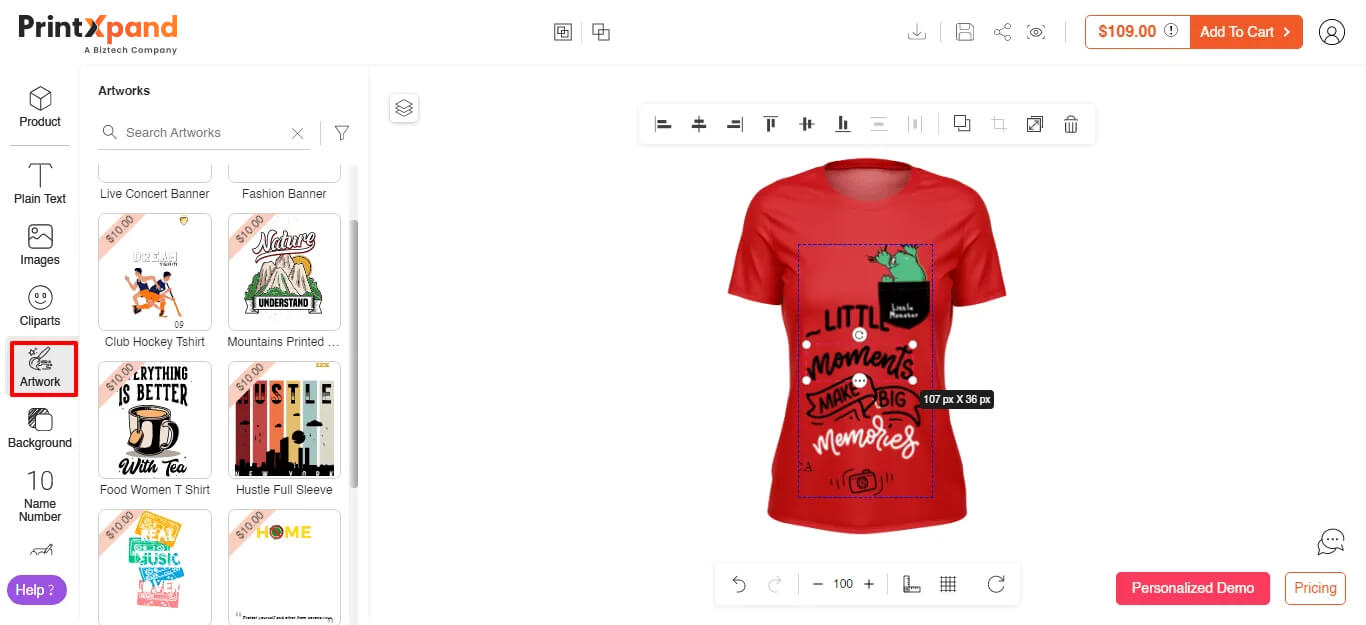
(Artwork Manager to Create Ready-to-sell Products)
Customers can add text, edit images, share their designs, and a lot more using the tool. Moreover, the intuitive UI ensures that users get a clutter-free experience from any device.
See how the tool works with your e-store and request a detailed demo for more details.
5. Easy Payment Modes
Payment solutions for online marketplaces have the ability to shape the success of your business. The right solution can help you overcome some of the most common payment challenges, including fraud protection, multiple payments, etc. Using this feature, both admin and artists can manage all the transactions they make. From the backend, an admin can set up a payment configuration to view, pay, and manage all transactions done with the vendors.
6. Real-time Notifications and Alerts
Notifications are one of the most undeniable features of a marketplace. As a marketplace owner, you can leverage notifications as a marketing strategy to engage end customers by sending relevant alerts. You can use notifications for sending various updates and reminders. This feature enables the admin to check user requests, feedback, payments, etc. Marketplace users can also view the notification count for artwork approval, new orders, transactions, etc.
7. Attachable B2C Web to Print Store & Artwork Management
In a C2C marketplace software, every seller will have their own digital storefront with all the necessary eCommerce features. With an integrated web to print store, your marketplace users can launch their micro store in no time. Using industry-standard themes, they can customize their stores as per their requirements.
With artwork management, you can enable designers to get control over their artwork. Once an admin approves artwork access, artists can view and manage artwork orders. They can create a featured collection, use filters to sort different artwork, and a lot more.
Attachable PrintERP
PrintXpand is an ERP software that aims to centralize your business’s operations, automate routine tasks, and streamline processes. Optimizing operations reduces manual work, improves efficiency, and increases revenue margins. PrintXpand gives you a single interface from which you can manage all end-to-end print operations. It offers several features like inventory management, print job management, order management, artwork approval, report creation, quotation manager, and a lot more.
Launch a feature-rich C2C marketplace platform with PrintXpand.
Step 4: Get Your Shipping Strategy in Place
A well-planned and executed eCommerce shipping strategy is imperative for your marketplace’s success. A shipping strategy doesn’t only include quick delivery and a shipping fee. There are various other aspects you need to take care of.
1. Finding The Most Suitable Shipping Method
Shipping methods are rates and services that your customers can choose during the checkout process. In most cases, they depend on the carriers (FedEx, USPS, UPS, etc.) you work with. The most common ways you can charge for shipping are:
- A flat rate no matter how many items a customer chooses
- Amount based on weight, location, and speed
- Free shipping
To attract more customers, offering free shipping seems to be the first choice. However, you have to make money somewhere. So, you will have to charge more for your products. That can be off-putting if a customer goes over to your competitor who is charging less.
2. Choosing Fulfilment Model
eCommerce fulfillment includes different models that vary based on your business size, number of orders, inventory, etc. If you do not want to handle the process yourself, you can partner with a third-party fulfillment provider.
When building a C2C marketplace, you need to integrate one of the printing and fulfillment services into your store. The fulfillment provider will take care of manufacturing, shipments, and such.
The three most popular fulfillment providers are Printful, Printify, and Gotten. Each has its pros and cons. Therefore, it is important to do an in-depth analysis before choosing a provider.
3. Managing Purchase Returns
Product return rates are one of the biggest challenges online businesses face. At least 30% of all products ordered online are returned. There are various reasons why customers return their purchases.
While it is not entirely possible to eliminate purchase returns, you can prepare to reduce them. The most common practice is to display a transparent return policy to let customers know the conditions for you to accept returns.
Writing accurate product descriptions is also another way to inform customers and help them in making better decisions. A good product description includes product dimensions, colors, size chart, etc.
Step 5: Choose a Monetization Model
Choosing a revenue model depends on your business requirements and goals. However, these are the popular models that marketplace businesses use.
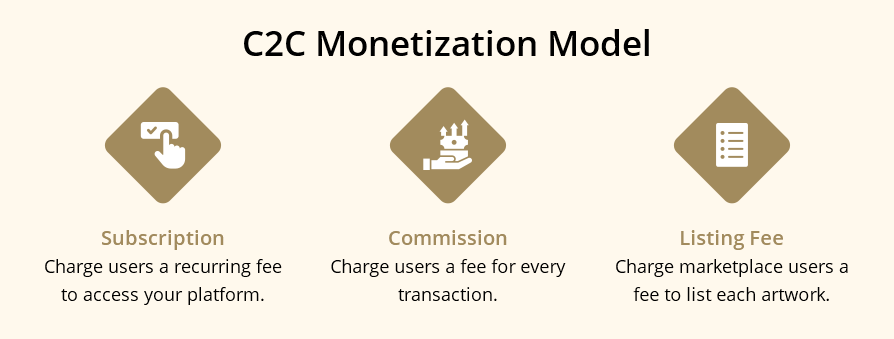
1. Subscription Model
A subscription fee is a marketplace model where you charge marketplace users a recurring fee to access your marketplace. This model allows you to predict your monthly revenue on a regular basis. It also attracts more users to your platform because they have to pay a relatively smaller amount each month instead of paying a big sum all at once.
2. Commission Model
Another popular revenue model for marketplace businesses is commission fees. Here, for every transaction, you charge users a fee. You can charge either an end-customer or an artist or take a fee from both. This is one of the most effective revenue models because, with each transaction, you monetize.
3. Listing Fee
In this revenue model, users of your platform pay for every offer they post. The difference between the commission and listing model is that you charge users only when they sell an item in the first model. But here, they pay for posting. As compared to subscription, listing fees are small and cheaper. That also makes it harder for you to earn enough revenue. So, a good idea is to have this as a secondary model.
There are other revenue models, too, like freemium, ads, etc. For desired results, it is good not to limit yourself to a particular business model. You can combine more than one revenue stream.
Step 6: Find the Best Promotional Strategies
To grow your marketplace, you need to work hard to attract both buyers and sellers. To promote your marketplace, you can choose strategies that fit your goals and needs. These are a few marketing strategies to consider.
1. Pre-launch Teaser Page
Coming soon pages are the most common method to build excitement among users prior to launch. Landing pages help in creating a great first impression and raise brand awareness.
It also gives a chance to acquire potential users’ emails and start with your email campaigns. Typically, a teaser page includes information like:
- Brand name & Logo
- A clear value proposition
- Benefits your business offers
- Social proof
- Launch date
- A call to action
Idea in action: Tapster’s landing page is simple yet powerful. They give early birds a chance to win $100 in exchange for an email address. It’s a perfect example of a coming soon page.
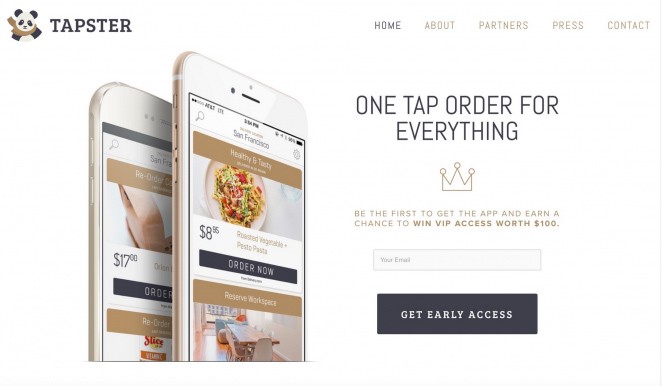
(A coming soon page with brand logo, an attractive offer, and a clear CTA)
2. Loyalty Programs to Support Repeat Users
Once your marketplace starts seeing users, you would want them to continue doing business with you. A loyalty or reward program is a customer retention strategy that motivates them to continue doing business.
It further increases customer lifetime value, encourages word-of-mouth marketing, and boosts revenue.
There are different types of rewards and incentives you can offer. One program you can consider is the ‘refer a friend program’.
Here, you can provide an economic incentive to artists or end-customers for referring your business to their peers. That way, you can turn them into brand advocates.
Idea in Action: Airbnb offers an effective referral program by offering an attractive bonus. Users can avail economic benefits by introducing Airbnb to their friends.
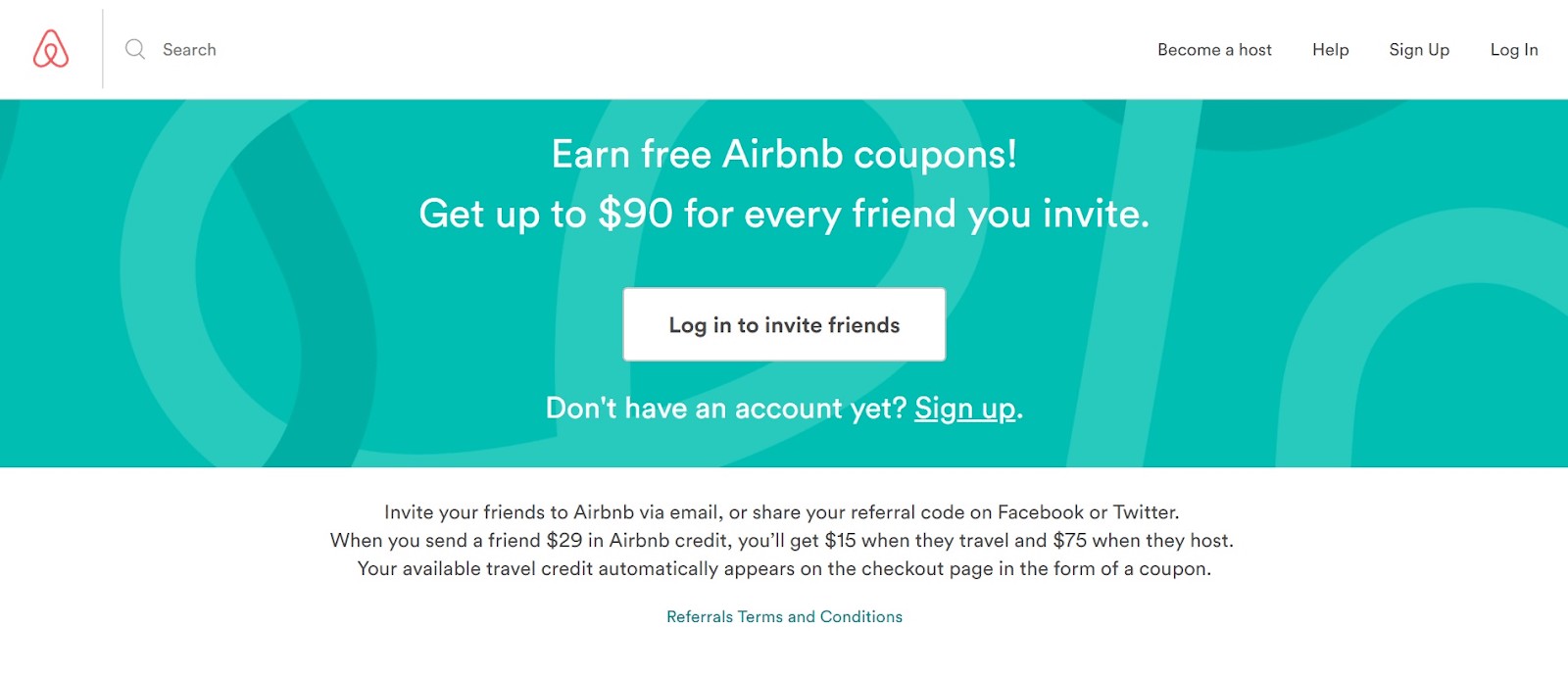
(Airbnb offers an attractive bonus in the referral program)
3. Drive Organic Traffic
Search Engine Optimization does not show results overnight. It takes time and effort. With the right strategy, you can drive traffic, generate leads, and make sales.
When creating an SEO campaign, the first step is to start with keywords. The two most common mistakes to avoid are choosing too difficult to rank and irrelevant keywords.
Analyze your competitors’ websites, scan through their product pages to look for potential keywords. You can use tools like Ahrefs, Google Keyword Planner, etc., to find the right keyword opportunities.
A typical business gets 59 actions from its GMB listing every month. And this translates to 5% of GMB listing views resulting in some sort of action.
Consider using Google My Business to boost your content and SEO. You can display your website information, reviews, etc. That will further help in improving local search results.
4. Build a Social Media Presence
Currently, there are 3.78 billion social media users. This equals about 48% of the population.
As customers spend significant time on social media channels, it is worth reaching them with social posts.
Brands that have realized the power of social media marketing have improved brand awareness and customer loyalty. 73% of marketers believe that their efforts through social media marketing have been “somewhat effective” or “very effective” for their business.
For your marketplace platform, you will need a social media strategy. It includes your goals, the platforms you want to target, and the content strategy.
Is September too early for a Christmas tree this year?
— Etsy (@Etsy) August 25, 2021
(Etsy’s Engaging Posts on Twitter)
An idea in action: Etsy strikes a perfect balance between posting promotional content and engaging posts like a Twitter poll.
Build, launch, and promote a C2C marketplace with PrintXpand product designer tool.
Build a C2C Marketplace Platform with Us
PrintXpand works with businesses across the globe to build and grow their online marketplace successfully. We have the right team of business thinkers and technical experts who can help you build a perfect C2C marketplace as per your requirement.
Build, launch, and promote a thriving C2C marketplace with PrintXpand!
All product and company names are trademarks™, registered® or copyright© trademarks of their respective holders. Use of them does not imply any affiliation with or endorsement by them.
![How to Build a C2C Marketplace [A Complete Guide] How to Build a C2C Marketplace [A Complete Guide]](https://www.printxpand.com/wp-content/uploads/2021/09/How-to-Build-a-C2C-Marketplace_.jpg)



